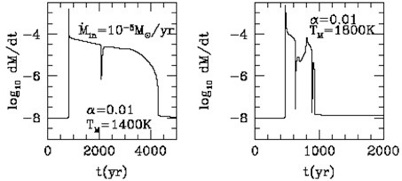
Recent spitzer C2D survey has indeed suggested that protostars should undergo episodic accretion such as FU Orionis outbursts. We thus extend our previous study to see how episodic accretion can affect star formation and protoplanetary disk evolution, and furthermore the initial condition for planet formation.
3.1 Early evolutionary stage-outburst :

3.2 Long term evolution-layered accretion with infall:

